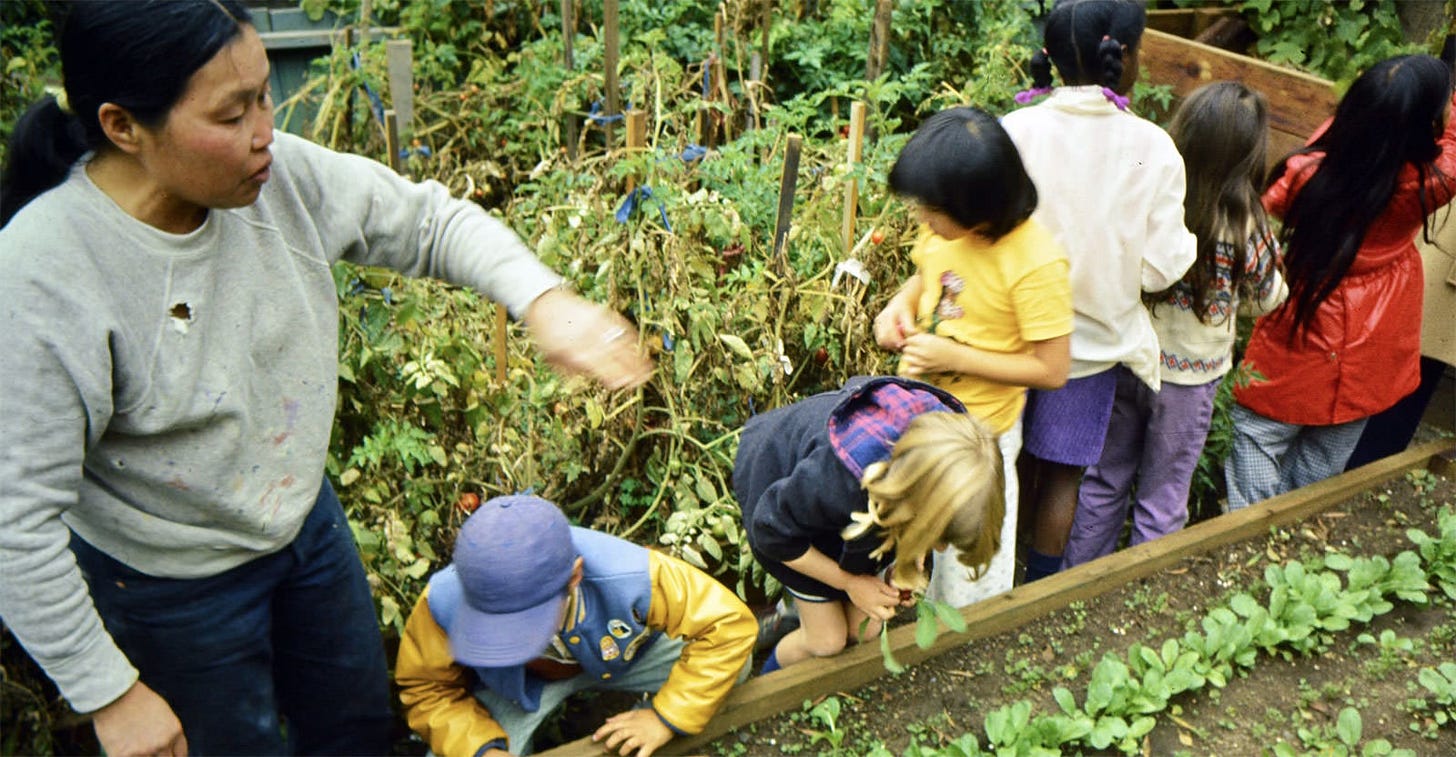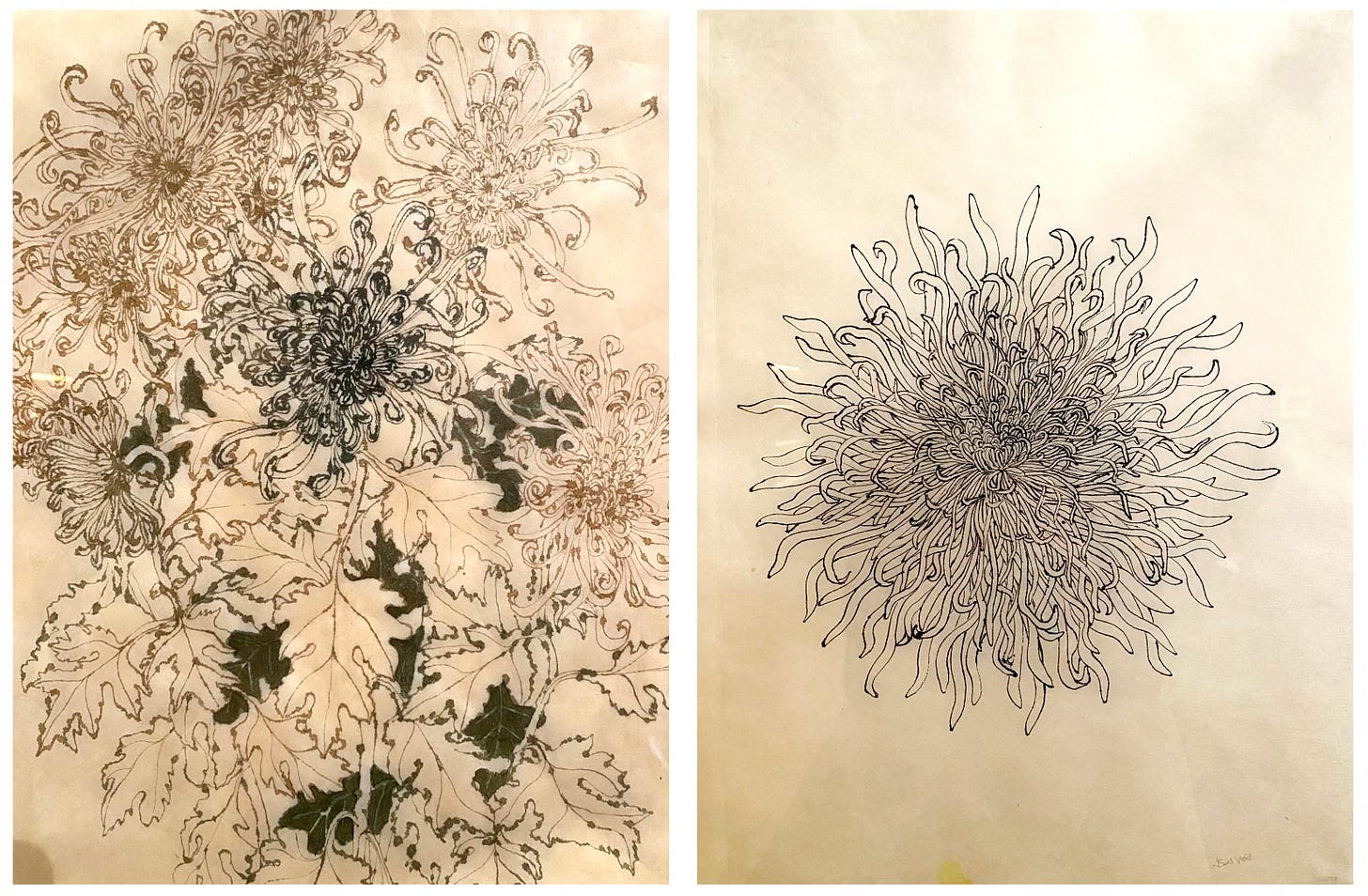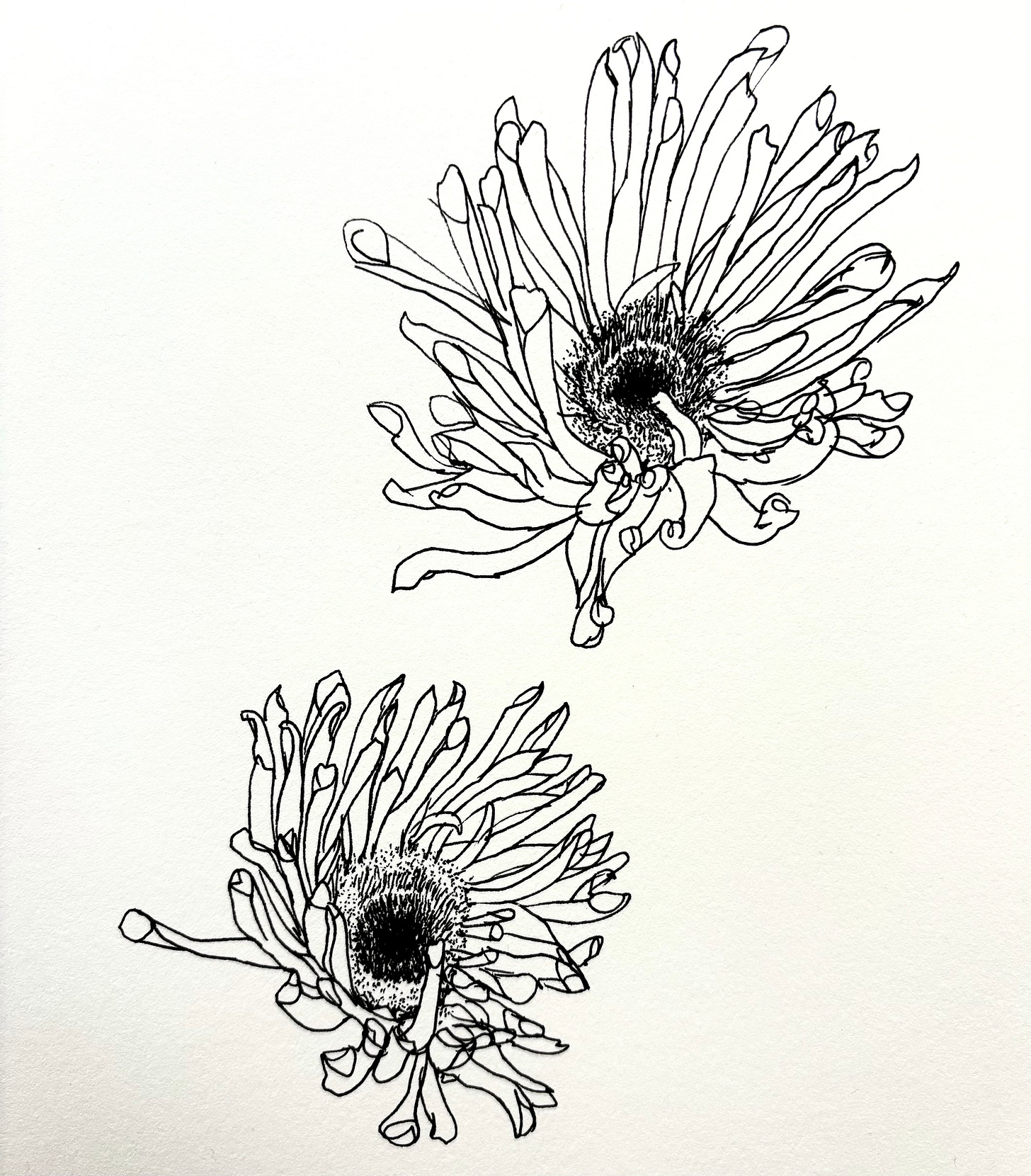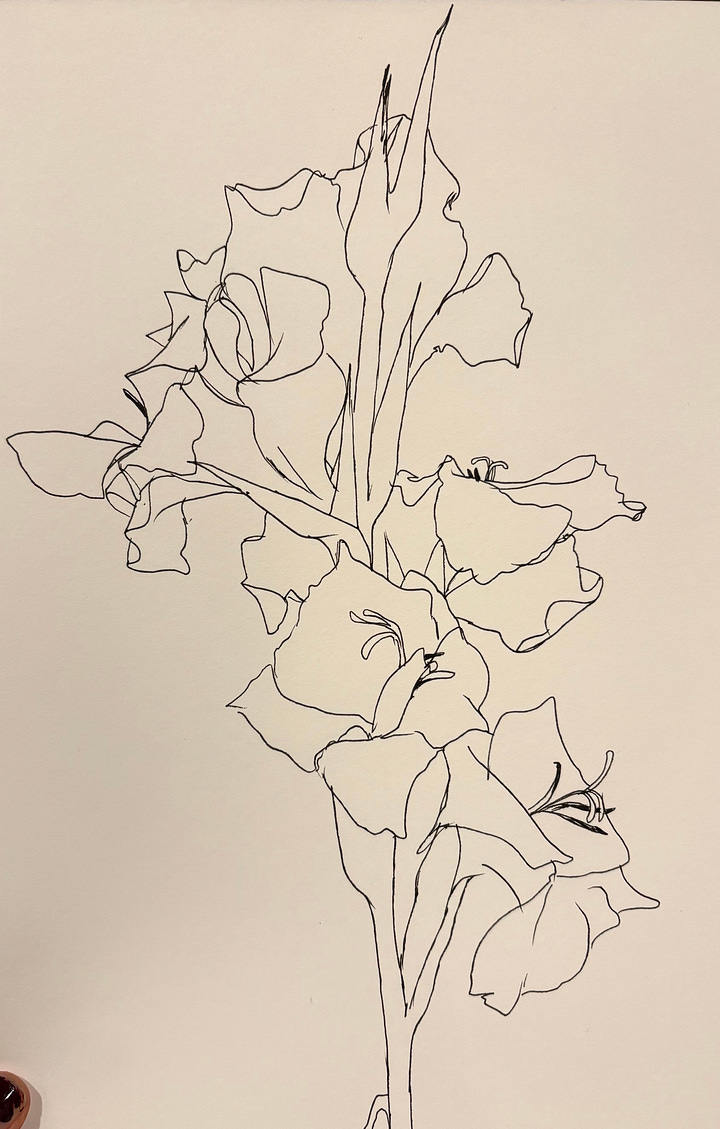Hi friends.
An exhibition of Ruth Asawa’s artwork opened a month ago at San Francisco’s SFMOMA to wild applause. The retrospective of her life’s work is the most comprehensive exhibition of her artwork ever, and is considered by many to be a long overdue recognition of her prolific career. This artist and fan of her work and life could not agree more. A few things make the exhibition feel extra special to me:
It shows the breadth and depth of work by an artist who was driven by process, not outcome.
You really get a sense of who she was not only as an artist, but as an educator, an advocate — and as a mother, partner, grandmother, and friend.
The exhibition feels more like San Francisco than any art show I’ve ever seen. Her work was deeply rooted in place and people and advocacy, and the city and cultures of SF is palpable throughout.
I have seen the show three times. I’m sure I will go thirty more. If you see me there gently weeping in the corner, don’t worry. It’s with gratitude. Ruth Asawa is such a huge inspiration to me. Not only her artwork (which I’ve shared with you before here, here, and here) but also how Ruth Asawa lived her life. She models, for this artist at least, how to be.

I grew up with a family that was incredibly supportive of my interests in art, but there were no artists in the family. I didn’t see anyone making anything except dinner. My mom’s dear friend Leslie was (still is!) a painter and ceramicist, and visiting her studio when I was little helped me imagine what a “room of one’s own” for art could be.
Later, when I was around 8 or 9 and my interest in drawing was clear, my mom took me to meet a cartoonist named Phil Frank, creator of the comic Farley. We visited his home studio, and he generously showed me how he worked out ideas, the tools he used, how he put a strip together, and how the drawing turned into print. That early studio visit showed me that drawing could be a job — something that made sense within my 9-5 understanding of the world. That was a gift. But I still didn’t have a sense of what an artist’s LIFE could look like. Now, nearing fifty, I am an artist. It is my job. I have a studio. And still, I wonder, what IS the life of an artist? Is this life what it is? What does it mean to live like an artist? Is it even about making art at all?
The artists I most admire are driven by two things: curiosity and creation. They wonder with open minds and eyes, and explore with brave hearts and hands.
What I’ve learned through my own experience and from artists I know and admire, and studying the lives of those I adore from afar, is that the life of an artist is not about a certain schedule or routine or achievement or status. There are a million ways to be, and accolades don’t mean a thing. The artists I most admire are driven by two things: curiosity and creation. They wonder with open minds and eyes, and explore with brave hearts and hands. No matter what else is going on, no matter how distracted or overwhelmed they may be with other activities like family, work, politics, you name it, that is how they approach their daily lives: with curiosity and creation; wonder and bravery. They look at everything, and I mean everything, through this artist’s lens. And while it’s never easy, rarely reaps material gain, never fits neatly into other people’s boxes, and can honestly cause some serious heartache, it is never, ever dull.
Ruth Asawa is a perfect example of this. And those three areas I mentioned above: Process over outcome, Art and Family, Her Rootedness and Exploration of SF, outline for us how she lived a creative life, and what we can learn from it and apply to our own.
DrawTogether x SFMOMA
For the next three weeks, we are doing an exciting collaboration with The San Francisco Museum of Modern Art (SFMOMA) focusing on the Ruth Asawa show, culminating with a live drawing event for Grown-Ups Table (GUT) members. (More to come on that!) Today we start by focusing on that first area I mentioned above — “process over outcome” — by spotlighting an area of her work often overlooked until now: her hundreds (thousands?) of flower drawings, and her creative life in the studio, and in the garden. And because I love Ruth and her life and work so much, access to the full post, assignment, and community art share/chat is free for everyone.
Ready for some serious Asawa?
Okay, let’s do this.
Ruth Asawa, Artist & Gardener
“You can paint flowers but make sure that they’re Asawa flowers.” - Josef Albers
We’ve talked about Asawa so much in the GUT — her life as an artist, educator, and advocate. But something I didn’t fully grasp until this show: she was one hell of a gardener.
Jesse Thorn, the host of NPR podcast Bullseye, saw Asawa often as a student at the public arts high school she started, now named the Ruth Asawa San Francisco School of the Arts. He said, “I was aware that she was a famous artist, but I knew her first and foremost as a gardener. Because she was [there] with her hands in the dirt… working hard every day and I would look and think, like, ‘I think this is the lady that founded our school.’” Another previous student who Candace ran into at the museum said they often took field trips to Ruth’s home to visit her garden there.

At home, Ruth would grow most of the fruits, vegetables and herbs, it was actually her husband Albert Lanier who would grow the flowers in the garden. Ruth would often cut them and make them into bouquets.
And then she would draw them.

“You can’t force a plant to bloom. It has a cycle. You have to tend it and care for it and wait for the bloom to happen. If you don’t take care of it, it dies. The more experiences you have like this, the more you begin to understand your own cycle.” — Ruth Asawa
Ruth Asawa drew the most gorgeous flowers.
Drawing and gardening have a lot in common. Patience. Practice. Attention. All this is essential to cultivate growth, and is evident in Ruth’s artwork. In her flower drawings, it’s the attention — a deep, focused looking — that grabs your eye.
Do you garden? Love to hear your thoughts on the intersection of gardening and art in the comments.

First, a few notes on Ruth’s drawing techniques: Ruth generally did contour drawings of flowers — that means she draws only the edges. Blind contours are when you don’t look down at the paper while drawing. Contour drawings you do, but you still focus primarily on looking at the flower. You are drawing what you see. She drew with pen and ink — often a dip pen with india ink, and often on cheap, coated paper or in sketchbooks. She was not precious. She drew all the time. At home. In meetings. In the world. She drew from life, and used it to look closely at the world.
I was lucky to spend some time with Ruth Asawa’s grandson, Henry, and he shared with me a bit about her drawing process. He told me when Ruth drew flowers “she was rarely looking down at the page. She would check in with her hand… Her ability to capture flowers and the depth of a bouquet [of flowers] was just so natural.”
Drawing flowers
When we look at Ruth’s flower drawings, we don’t just see a flower, we see the time, care, and attention Ruth put into it. We feel it.
Ruth’s attention to a flower’s construction reveals a deep curiosity about the natural form. You just can’t draw like Ruth unless you look so, so closely, and you can’t look that closely without caring deeply. Have you ever looked closely at a chrysanthemum? It will break your heart and brain, both. A single flower contains a gazillion pointy petals, each projecting from one bundled center. Every single one of those petals layers over another and twists and turns. It’s an incredibly difficult form to detangle, visually. To trace every contour line with your eyes is a huge challenge. An artist needs a strong “looking practice” to have such sustained concentration. Ruth’s drawing above makes it clear that she has drawn hundreds (thousands!) of flowers leading up to that one. She understands how flowers work. To do that, Ruth’s put in time in both the garden and at the drawing table.

Look how confident, strong, and consistent her lines are. If there’s a wobble, it’s deliberate. Drawing like this takes total attention and concentration. There is no “try” when you draw like this. There are no expectations. There is just DO.

Sometimes Asawa opted to leave the vase out of the drawing completely, like in the drawing above. You can still tell there is a vase filled with water — notice the stems and the subtle refraction she captures in the water, but she doesn’t include the actual contours of the glass. She only shows the flowers themselves. Henry told me that there are sketchbooks filled with flower and plant drawings like this — by both her granddaughter Lilli and Asawa — sometimes drawing the same plants, and sometimes drawing together.
While she was at Black Mountain College, she confessed to her mentor Josef Albers, that she wanted to paint flowers instead of pursuing the more formal, abstract work popular at the time. He told her, “You can paint flowers, but make sure that they’re Asawa flowers.”1
While she is certainly not the first artist to draw contour drawings of plants, her marks are unmistakable. Her lines and flowers are her own.
Asawa would often draw flowers given to her by loved ones, and sometimes she gave those drawings to them later. According to one museum placard, "Asawa’s daughter Addie has mused that the artist’s practice of drawing a bouquet and then regifting the arrangement as a work of art enabled her to fully absorb the affection of friends and family who took the care to select or grow and present flowers to her." This made me smile. I do that, too. Maybe you do, too. If not, maybe a nice thing to try.
Okay, I could go on and on, but as we know, the best way to learn about something is to actually do it ourselves. So let’s turn our attention towards actually doing some darn flower drawings.
Friends, you will need some flowers or a plant for today’s drawing assignment. It’s a perfect excuse to buy yourself a little bouquet, take a walk and pick some wildflowers, or sit outside in nature with some plants. :)
Alright, let’s draw.

Drawing Assignment: Asawa Flowers →”You Flowers”
This week we’re taking inspiration from Ruth Asawa’s flower drawings and channeling Josef Albers’s advice to make them our own. My flowers will be “Wendy flowers,” and yours will be “You flowers”!
Step 1: Choose your subject! As I said above, that might involve finding flowers or plants to bring home or exploring a park. Pick something with an organic shape that interests you. If your nearest option is a weed, well, those can be beautiful too!
Step 2: Give your attention to it. Look at it closely. As Asawa drew the bouquets she received, drawing was a form of gratitude and care. What details do you notice as you take your time to really examine and appreciate your flower or plant?
Step 3: Draw what you see! Asawa did contour drawings, and if that feels right to you, try to capture where the edges of the petals and leaves are — really frame those in your mind’s eye and then draw them on the paper. But also, you do you! Tap into your own process!
PRO TIP: if you feel overwhelmed or pressure to “get it right” try doing a blind contour drawing. That means draw your flowers without looking down at your paper. Remember to go slow, look closely, and draw what you see.
Step 4: Share your flowers in the chat! We can tend our community garden together!
Here are two other drawings. Can’t stop won’t stop!


Alright, cannot wait to see YOUR flowers and plants. See you in the chat, friends. And see you next week for part 2 of Ruth Asawa… we’ll be talking about her identity as an artist, mother, partner, and friend - and her inspiring home studio!
PENCILS UP! ❤️✏️❤️
xoxo,
w
Gut Gallery: Dream Studio
Last week was an inspiring and challenging assignment! We used two-point perspective to image and draw our dream studios - and the results were phenomenal! Light, space, tropical locales - if we can imagine it, we can draw it. And if we draw it, it can become real. Here are a few from the community chat:







I looked really closely at her line drawings because they were so perfect, so assured. Where were the blotches, the smears, the do-overs? Her control is awesome.
Oh Wendy. I feel the same about this show. What a body of work she created, but her life was an art work as well. That final piece in the show— made shortly before her death— moved me to tears. A tiny little wire ball. She must have known it was the last